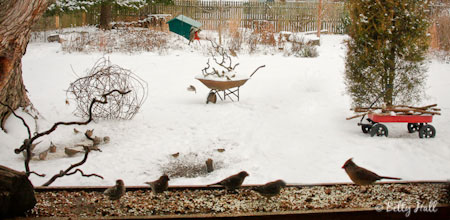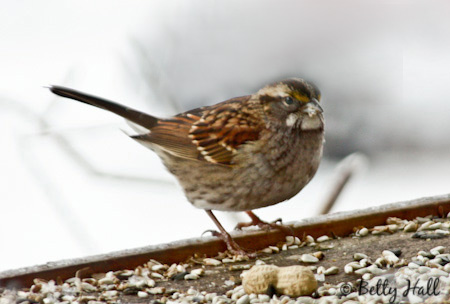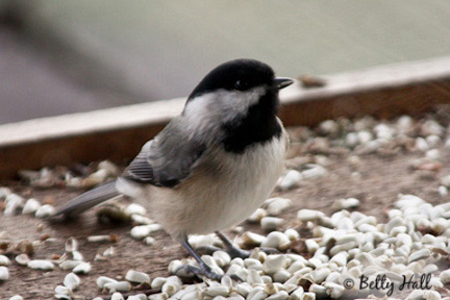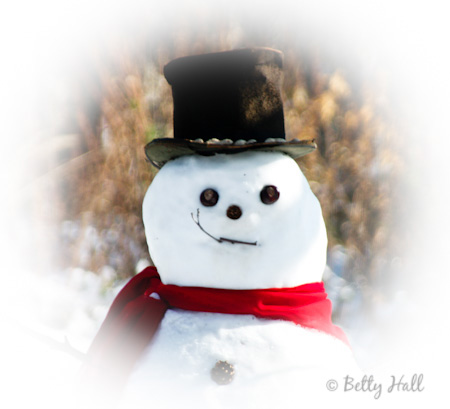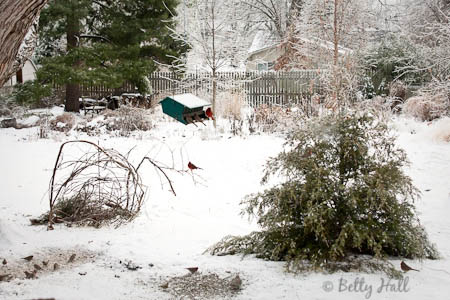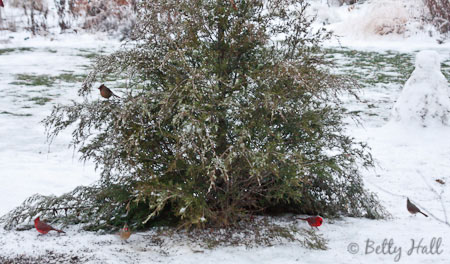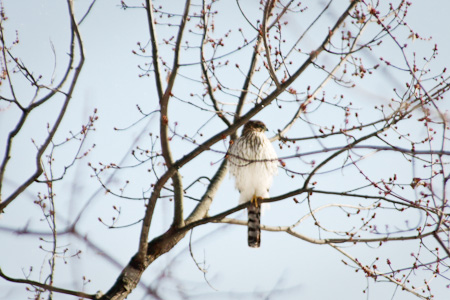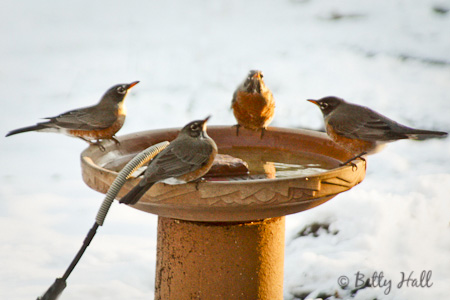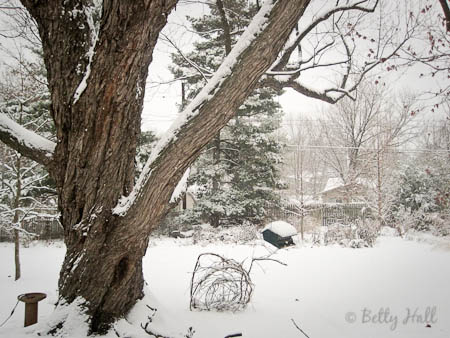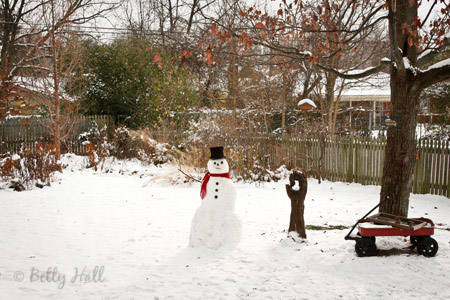We have five different bird feeders but my favorite is the shelf feeder directly outside our dining room window. We enjoy watching the birds while we eat. Safflower seeds attract birds and discourage squirrels; peanuts attract blue jays.
Most of our year-round residents visit the shelf, including cardinals, doves, house finches, wrens, and titmice. It’s a special treat to see them up close.
White-throated sparrows (Zonotrichia albicollis) are a favorite that we see only in winter.
Tiny Carolina chickadees (Poecile carolinensis) are with us year-round, and I never tire of seeing them with their dapper black caps and bibs.
I recently learned that chickadees only nest in tree cavities or nest boxes, and I plan to put up a chickadee bird house by early spring. It would be exciting to have a pair of them nesting in the back yard.

